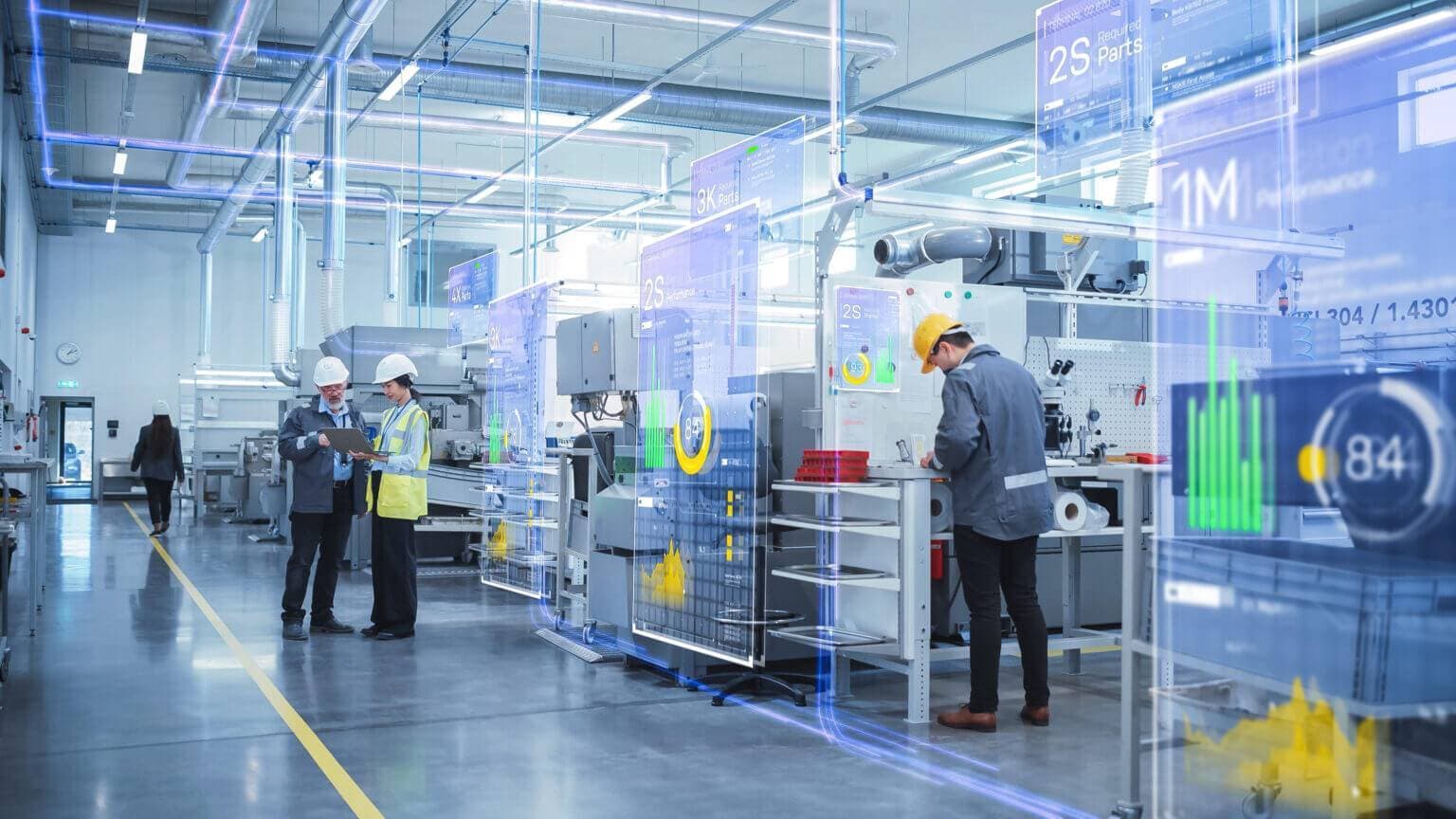Dave McMorran
Director of Sales Engineering
Wondering whether the legacy systems of record can be augmented to meet the demands of tomorrow’s goals?
Contributed Article (AutomationWorld): The fusion of artificial intelligence & industrial data is setting the stage for unparalleled levels of efficiency and innovation. But knowing which applications can provide the most near-term value is key to success.

Amid all the hype surrounding the capabilities of artificial intelligence (AI), it's crucial to acknowledge a core truth: Not all AI is created equal. The functionality and efficiency of AI systems heavily depend on the quality of data they are fed. Without high-quality, well-structured data, the promise of AI in industrial settings remains unfulfilled.
If you’re on the path to improving your company’s data and looking at ways AI could have a near-term positive impact on your operations, following are three key applications to consider.
Digital twins—virtual replicas of physical assets or processes—benefit immensely from AI. While sprawling, complex language models often steal the limelight in AI discussions, small language models are becoming game-changers in the industrial domain. These compact models are tailored for specific tasks and designed to operate efficiently within the constrained computational environments typical of many industrial settings. The application of these smaller, more-focused language models within digital twins can provide nuanced insights into machine health, predict operational issues and optimize processes without the overhead of their larger counterparts.
By training on industry-specific datasets, these small language models become adept at understanding technical jargon and predicting outcomes within a specific domain, making them an asset for real-time decision support and scenario planning.
AI-based time-series predictions represent a transformative approach to analytics within industrial operations. Time-series data, a sequence of data points collected or recorded at time intervals, form the backbone of predictive analytics in the industrial context. This data can range from temperature readings every hour to machine vibrations recorded every millisecond. AI thrives on this data, leveraging it to predict future events based on historical patterns.
For example, temperature or vibration patterns may indicate an impending equipment failure, allowing maintenance teams to intervene before the failure occurs. Moreover, the applications of time-series predictive analytics extend beyond maintenance. They play a crucial role in operational optimization, helping companies predict demand fluctuations, adjust production schedules and manage supply chains more effectively. In energy-intensive industries, predictive analytics can optimize power usage, reducing costs and environmental impact.
Despite these promising benefits, implementing AI-based time-series predictions are not without challenges. High-quality, consistent time-series data collection is a prerequisite for effective predictive analytics. Additionally, developing models that accurately capture the nuances of industrial operations requires tremendous domain expertise.
A catalyst to data improvement in this area for manufacturers is edge computing, where data processing occurs directly on devices where data is generated.
The instantiation of new operational workflows has typically required intermediary IT professionals to translate operational needs into technical specifications. However, with the advent of intuitive NLP (natural language processing)-driven interfaces, there is a direct bridge between idea generation and implementation. This not only accelerates the pace at which new workflows can be deployed, it also encourages a culture of innovation and experimentation across all levels of the organization.
As NLP technology continues to advance, the potential for these no-code, text and voice-based systems grows even further. We're likely to see more sophisticated and contextually aware systems that can interpret and act on complex commands, making the implementation of new workflows and processes even smoother and more intuitive.
As industries navigate the nuances of integrating AI into their operations, the emphasis on high-quality, well-governed data becomes increasingly apparent. Delving beyond the AI hype to understand its dependency on a solid data foundation is the first step toward realizing its full potential in the industrial sphere. The journey towards AI maturity involves continuous learning, adaptation and investment in data infrastructure.
This reality underscores why bringing AI to the manufacturing floor requires a shift in mindset and infrastructure. At Litmus, we focus on building scalable systems that can grow with the needs of our industry users. By investing in the pillars of data simplification and operational scalability, AI adoption in manufacturing isn't just a future possibility—it's a present reality. Our mission is to equip industrial organizations with the structured data they need to harness AI effectively, ensuring that their AI journey is as seamless and impactful as possible.
Our work towards a unified industrial data ops approach is not merely a strategic move—it is a necessary evolution in a world where quality data is the lifeblood of the new AI era. By investing in the data infrastructure and practices that facilitate this transition, we work with our customers to set the stage for a future where AI and humans collaborate seamlessly.
Talk to our internal experts with your Industrial DataOps questions today!
John Younes
Co-Founder + COO
John Younes is the Co-Founder and Chief Operating Officer at Litmus.
Dave McMorran
Director of Sales Engineering
Wondering whether the legacy systems of record can be augmented to meet the demands of tomorrow’s goals?
Vishvesh Shah
Director of Product Management
The integration of edge computing with digital twins can help address challenges faced by manufacturers. It can reduce response time, optimize data, improve security, and lower risk.
Vishvesh Shah
Director of Product Management
Why Digital Transformation Journeys need Digital Twins